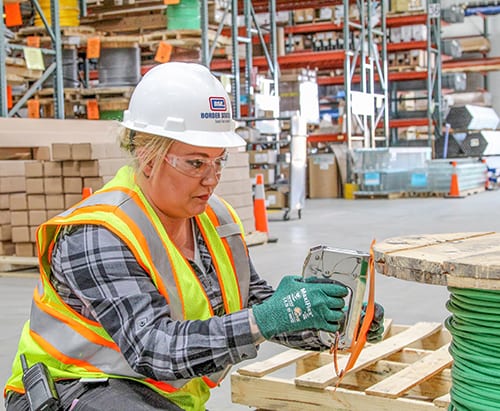 More than 2 million disabling work injuries occur every year, 25 percent of which involve the head, eyes or face. According to the Occupational Safety and Health Administration (OSHA), hard hat safety is required in work areas where objects might fall from above, where workers might bump their heads against fixed objects and if there is a possibility of accidental head contact with electrical hazards.
More than 2 million disabling work injuries occur every year, 25 percent of which involve the head, eyes or face. According to the Occupational Safety and Health Administration (OSHA), hard hat safety is required in work areas where objects might fall from above, where workers might bump their heads against fixed objects and if there is a possibility of accidental head contact with electrical hazards.
The basics of hard hat safety
The basic anatomy of a hard hat includes the outer shell, a suspension system (raising the hard hat at least 1 inch above the head) and a sizing/fitting head band.
For hard hats to be effective, workers should consider the following:
- Fit: For maximum protection, a hard hat should fit securely on the head and the suspension should be adjusted to be snug.
- Inspection: Users should inspect their hard hat shells and suspension frequently. The suspension should be replaced annually and the shell every two to five years, depending on usage. (Be sure to follow directions from the manufacturer.)
- Disposal: If a hard hat has sustained an impact, it may need to be disposed of even if damage is not immediately visible.
- Extra objects: Items should never be placed between the suspension and the shell.
- Storage: Avoid leaving hard hats in direct sunlight or extreme temperatures for extended periods of time as this will degrade most plastic shells.
- Cleaning: Certain chemicals, solvents or gasoline can also weaken shells, which is why it’s important to wash hard hats with soap and water.
- Alteration: Workers should never puncture, modify or engrave the shell or suspension of a hard hat.
Seek out hard hats that are made of water-resistant, slow-burning material. It’s also worth noting that hoods, winter liners, bandanas, skull caps (not baseball caps) and similar types of head covers are fine when worn under a hard hat as long as they fit smoothly on the top of the head and don’t contain any metal parts.
Choosing a hard hat
Different hard hats are designed for different work situations. Here are the three main classes of hard hats:
- Class G (general): Used mostly for construction, manufacturing and mining, these general service hard hats provide quality head protection but limited voltage protection. (up to 2,200 volts).
- Class E (electric): Designed specifically for electrical work, these hard hats will protect against both falling objects and electrical shock (up to 20,000 volts).
- Class C (conductive): These are lightweight hard hats that are not designed to provide protection against electrical conductors. They only protect workers from light hits to the head.
In addition to the three classes, there are two types of hard hats:
- Type I hard hats shield workers from objects and blows that come from above.
- Type II hard hats protect against both lateral and top-of-head impacts.
Work circumstances largely dictate the class and type of hard hat you need. Be sure to consider the information above to fit your specific work site applications.
Hard hat advancements and accessories
There are different options to making hard hats more comfortable, customizable and well-balanced for specific environments.
Workers now have more choices than ever with options like ventilated hard hats, lightweight carbon fiber hard hats, hard hat LED light headlamps and slots for hard hat accessories like hard hat face shields, hard hat hearing protection, hard hat chin straps and more.
By using proper hard hats for specific work environments, workers have a better chance of getting home safely at the end of each day.
This blog post was drafted in partnership with Ergodyne. Check out Ergodyne’s original article, “A complete guide to hard had safety: The evolution of head protection.”
Related posts
Hi-vis clothing regulations | Why you should replace worn-out reflective apparel
4 easy construction safety tips: Best practices to avoid job site hazards